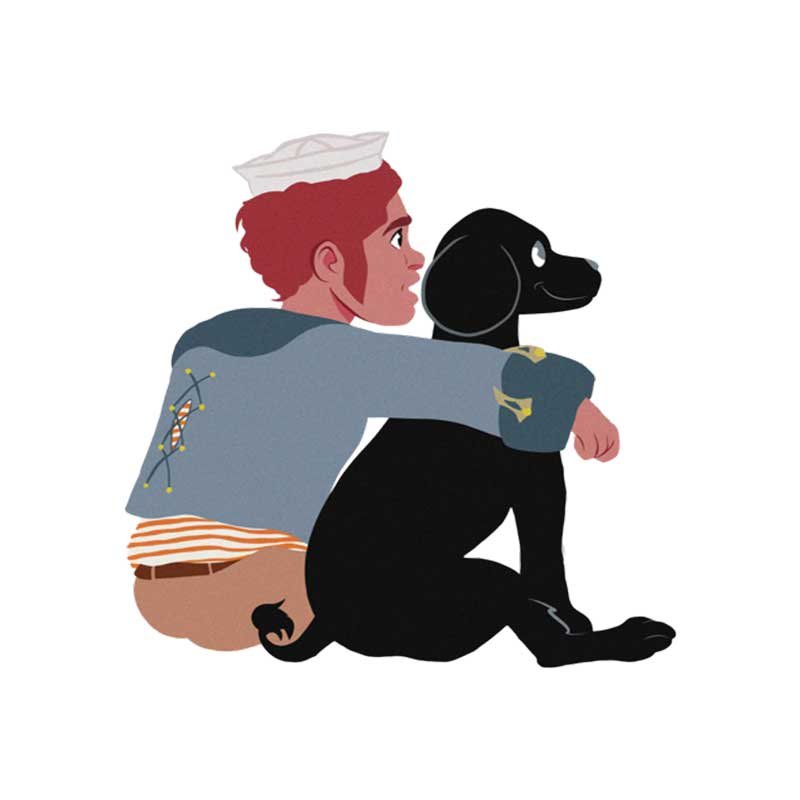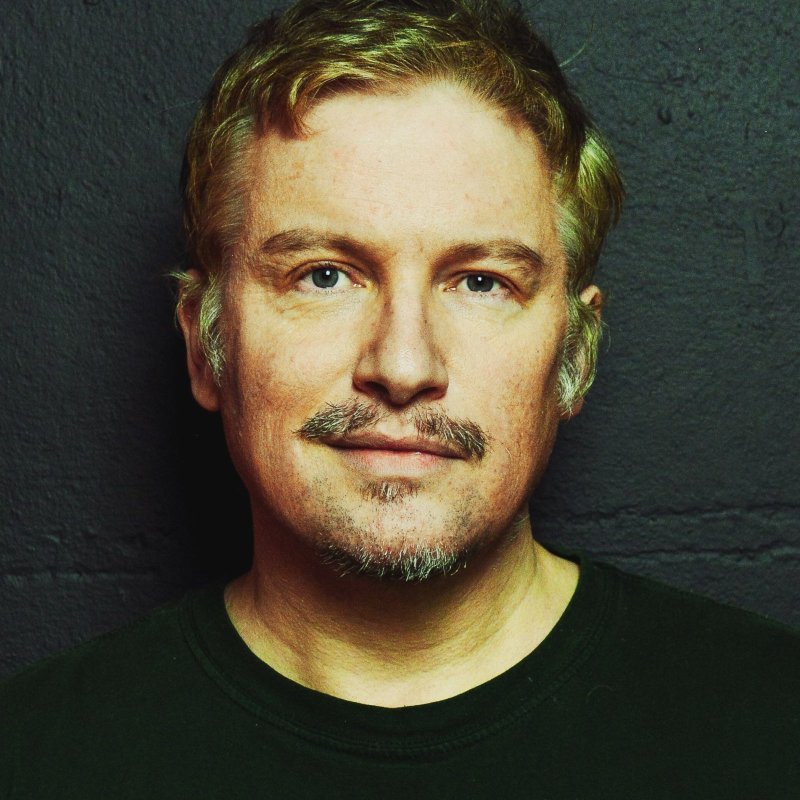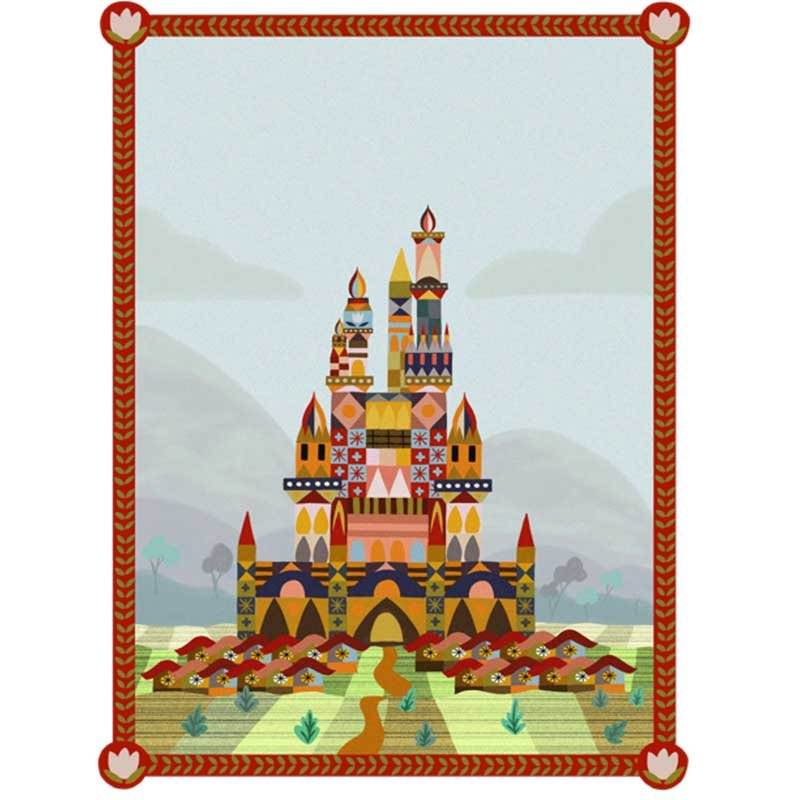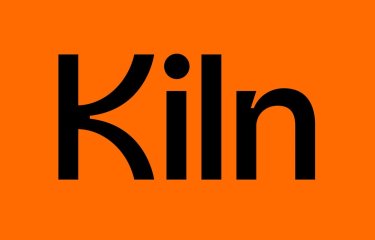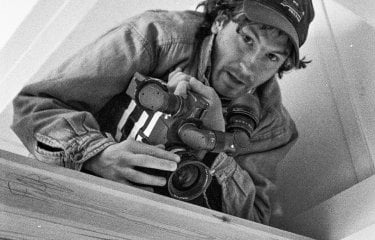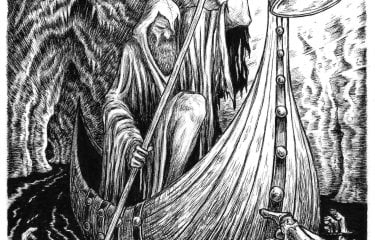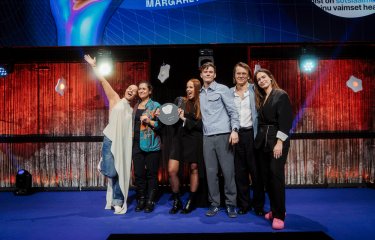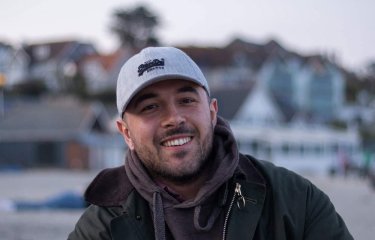From a BA and MA to LGBTQ+ fairytales and a PhD: meet Pete Jordi Wood
16 May 2024
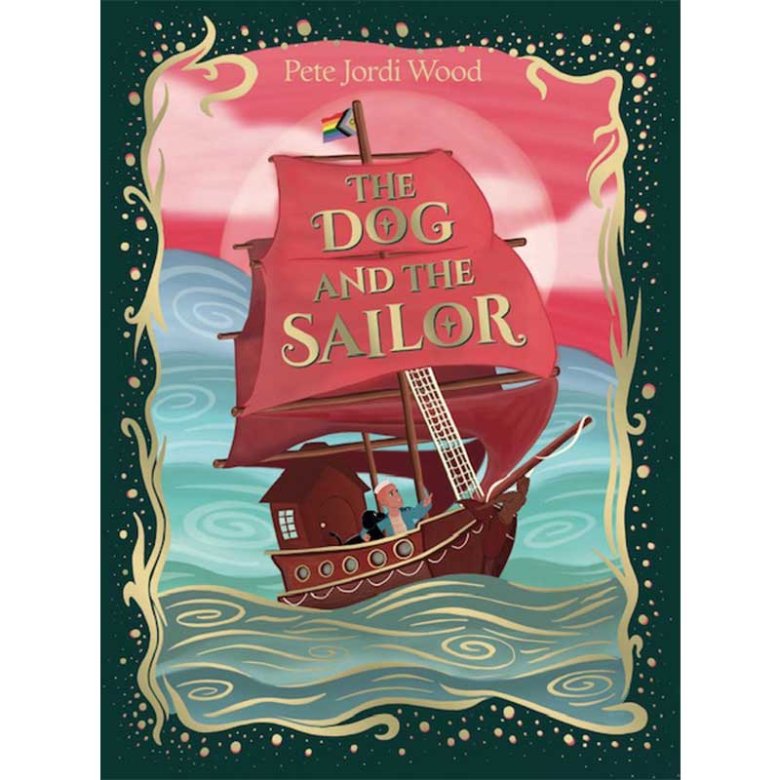
Pete Jordi Wood’s creative career has well and truly blossomed since graduating from Animation BA and Illustration: Authorial Practice MA. He released Tales From Beyond the Rainbow last year - a debut collection of LGBTQ+ fairytales exploring previously untold queer narratives in folklore - to critical acclaim, and is now studying a practice-based PhD at Falmouth.
This pioneering and courageous collection was the first of a two-book deal Pete signed with renowned publishing house, Puffin Books; today marks the publication of his second book The Dog and the Sailor, his debut picture book based on work he produced for his Falmouth master’s thesis.
We caught up with Pete to mark the publication of his new book, and to chat to him about his multi-faceted creative output and his exciting practice-based PhD project.
When did you first discover your creative spark?
I think lots of creatives start using their imaginations from an early age. I was drawing, painting, writing stories, singing, playing the piano and performing in plays as soon as I was in primary school. Those were the things I most enjoyed, and so I’ve spent the rest of my life attempting to find ways to keep doing them. As an adult I’ve tried to find ways to keep doing them and get paid enough to live whilst doing them, too, and I’m still trying to figure that part out to some extent!
You’re a creative with many strings to your bow; illustrator, author, screenwriter, curator and researcher. How do you find the process of moving between creative practices?
I don’t move between different practices as such; I see them as being different limbs of the same creature. But if I were to define my practice as any one thing, I’d say I’m a storyteller. My practice has become quite research-led in recent years – whether that’s researching existing stories to adapt or looking inward to find stories within my own life experiences to draw from. When I start a project, I am focused on finding the story at the heart of it. It is during the development process that you find the best way to tell that story, whether that’s through film, fiction, or told through some other media like a game or website.
It’s been a really long journey to publishing this book...when I initially pitched it to publishers, it was rejected. I’m really proud that I didn’t let that rejection stop me from pursuing the project
Your book Tales From Beyond the Rainbow – a collection of LGBTQ+ fairy tales – was published by Puffin Classics last year and has been described as ‘ground-breaking’. How does it feel to have been able to give queer illustrators in folklore a celebrated platform?
It was honestly such an amazing experience to get to work with a group of LGBTQ+ illustrators from around the world, many of whom I’ve admired for years. I love how different their styles are but how it all came together in the final book. Tales From Beyond the Rainbow was something I’d wanted to do for many, many years: to create an anthology of historically grounded folk and fairy
tales that existed through history featuring positive portrayals of LGBTQ+ heroes, sheroes and queeroes. Each of the artists shares a cultural heritage with the protagonist of the story they illustrated, and in most cases share the same LGBTQ+ identity, too. I’m so grateful to all the illustrators who contributed to the final book and I’m so proud of what we came together from all corners of the globe to achieve. It’s the queer fairy tale collection that was absent from my childhood, and I’m thankful to Puffin Classics for helping us launch a book like this into the world.
Today is publication day for your next book, The Dog and the Sailor, which is based on work you produced for your MA Illustration: Authorial Practice thesis, and which is also being developed into a film by producers in Hollywood. What element of this book’s success means the most to you, and why?
It’s been a really long journey to publishing this book, which is my debut as author and illustrator. When I first discovered this LGBTQ+ fairy tale in my research I got goosebumps because I knew how important it was for queer culture, but when I initially pitched it to publishers, it was rejected.
I’m really proud that I didn’t let that rejection stop me from pursuing the project, and I initially put it out into the world myself as an illustrated, online exhibition, which actor Dino Fetscher narrated, and my cousin Joe Dines composed music for. I sold a self-published limited edition picture book alongside it, did a press release for the launch of this little website I put up to host the exhibition, and that went viral thanks to a piece in Forbes written by the only journalist who replied, Jamie Wareham. That article led to me meeting producers who I’m now working with on the film adaptation.
I had also been shortlisted for the Penguin WriteNow scheme, which led to me meeting an editor at Puffin, and that got the conversation started about creating a picture book version of The Dog and the Sailor and doing the Tales From Beyond the Rainbow anthology. It took a long time, but eventually I was offered a deal and the chance to traditionally publish The Dog and the Sailor, and I’m so proud of how it turned out and just really hope others like it too.
You are currently working on a PhD at Falmouth and have created a practice-research project entitled Basic Witch. Can you tell us about this, and what some of your ambitions are for the project?
Basic Witch is a hub for my research and practice moving forwards as I progress through my PhD, so it is just a little blog for the moment. But it’s going to develop over time into something cool and queer as I create my final project, whatever that turns out to be! In the meantime, it’s a place where anyone interested in my research can get updates as I continue to study and unearth queer folklore and magic from the past.
As part of your PhD you have curated an exhibition called ‘A Cabinet of Queeriosities’ at Gwithti An Pystri, Falmouth’s museum of folklore and magic. How did this project come about, and how did you find the experience of curating an exhibition?
I wanted to illustrate the diverse history of LGBTQ+ magic, myth and folklore. Steve Patterson, the owner of Gwithti An Pystri, is such a wonderful human; he’s dedicated much of his life to the study of magic and folklore and has written several books on the subject. It is important that museums in the UK represent queer history, and when I proposed a cabinet dedicated to queer magic, Steve was enthusiastic and supportive.
In my work I seek to centre narratives around characters who we haven’t seen as the protagonists of their own stories before
The new cabinet is a permanent safe space for queer magic history that hopefully others will donate artefacts to in the future. Some of the artefacts I sourced are really special, such as a ‘Love Spell’ that’s from the Wei-Ming Shrine to the Rabbit God Tu’er Shen in Taipei – one of the last surviving temples dedicated to an LGBTQ+ deity in the world.
What piece of advice would you give to aspiring creatives?
Don’t aspire to be creative – just be creative. If you get up in the morning and spend part of the day drawing a picture, writing a poem, or playing a piece of music, then you are a creative. It isn’t a destination, but rather part of who you already are. Study your craft, and practice it whenever you can, and you’ll keep improving, and others will start to notice that.
I only have an Instagram account with barely any followers, but through competitions I have won or through sheer perseverance I have had the privilege of writing TV shows and films and publishing books. It can sometimes feel in this current world that nepotism, celebrity, knowing powerful people, or having social media platforms, are the root of success for creatives, but I hope I’m an example of someone who has none of those things but is achieving my creative dreams, nonetheless. I think if you trust that your perspective on the world is unique, and that you are your authentic self, you’ll find an audience out there that connects with your work.
What message do you hope people take away from your work?
In my work I seek to centre narratives around characters who we haven’t seen as the protagonists of their own stories before. History shows that LGBTQ+ people have been here for millennia, and perhaps we weren’t always as vilified as people think. In fact, we may even have been celebrated for being brave, or helping others, as some of these lost queer folk tales suggest. I hope the stories I tell through my practice contribute in some small way to the collective efforts of artists globally to craft the tales that were absent from our childhoods, particularly those of us who grew up in the shadow of Section 28.
